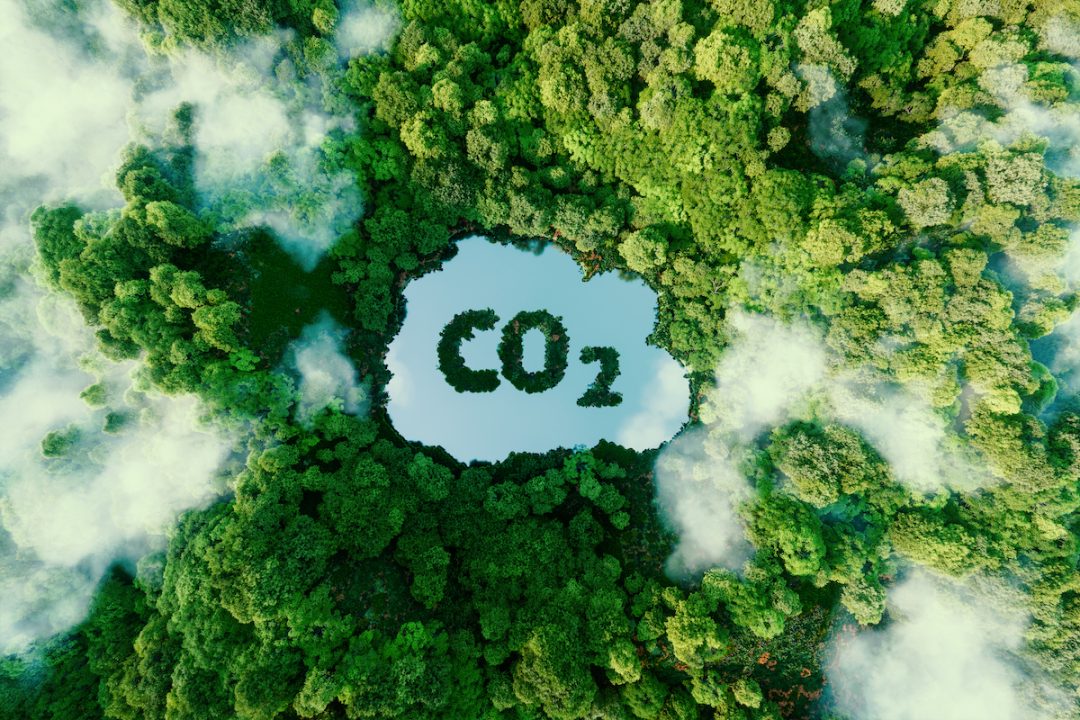by Selwyn Duke, The New American:

First there were the Biden family pardons, then the pardons of the J6 political prisoners. Joining the latter now, though, may be another case where the unjustly convicted would be absolved from guilt. It’s high time, too, as this convicted party has spent almost a generation in the pokey of public opinion and pseudo-science. His name?
Carbon dioxide — CO2 for short.
The gas’ savior may be President Donald Trump, who has decided that CO2’s case deserves another look. At issue is a 2009 “endangerment finding,” in which the Environmental Protection Agency (EPA), under Barack Obama, unilaterally decided the gas was a “pollutant.” (Never mind that it’s necessary for life’s existence.) But now Trump has ordered that this finding be revisited.
TRUTH LIVES on at https://sgtreport.tv/
Real Environmental Justice
Climate-Science.Press reported on the story Wednesday:
President Trump’s directive to the EPA to revisit the endangerment finding signals a long-overdue reckoning. For years, skeptics have pointed out glaring flaws in both the process by which the finding was made and the assumptions underlying it. For example:
- Scientific Uncertainty: The endangerment finding relied heavily on computer models that predicted catastrophic global warming. Yet these models have consistently failed to align with observed temperature trends. By overstating the risks posed by greenhouse gases, the EPA created a climate of fear and justified draconian regulations.
- Legal Overreach: The Clean Air Act was never designed to address global climate issues. Stretching the law to regulate carbon dioxide … was a legal maneuver that bypassed Congress and concentrated power in the hands of unelected bureaucrats.
- Economic Harm: The regulations stemming from the endangerment finding have been disastrous for American workers and families. High energy costs disproportionately harm the poor and working-class, while businesses face increased compliance costs that stifle innovation and job creation.
The matter of harming the poor cannot be overemphasized. Bjorn Lomborg of the Copenhagen Consensus Center once estimated that lowering the Earth’s temperature by one-third of one degree by 2100 would cost $100 trillion. Thus wasting resources has tragic effects. As Lomborg wrote in 2019, citing studies, the Paris climate agreement
will lead to an increase in poverty of around 4% [and] “may slow down poverty reduction in developing countries.” … In fact, the “sustainable” world would have an average of 26 million more people per year in poverty until 2050 than the richer and less unequal fossil-fueled world.
Is CO2 a Pollutant? The Science Says…
One peril of mixing government and science is that the latter’s determinations often end up being more political than scientific. Consider CO2: It is, in point of fact, not a pollutant but a prerequisite for life’s perpetuation. As to this, astrobiologist Jack O’Malley-James predicted in 2013 that life on Earth would end due to too little CO2. The reason? As the gas’ level continues dropping (the long-term pattern), its concentrations will eventually be too low for plant photosynthesis. And, of course, without plant life, the whole food chain collapses. (Don’t do the “Eat, drink, and be merry” routine yet, though. O’Malley-James’ apocalypse is still a billion years off.)
This said, everything is toxic at a certain level, even water; hence the principle, “The dose makes the poison.” But what of CO2? Is its level excessive?
The average person may guess that 20 percent of our atmosphere is carbon dioxide. In reality, however, the figure is just over 4/100ths of one percent — or approximately 420 parts per million. Now consider that its concentration was once 5,000 ppm and that plant photosynthesis ceases at 150 ppm. Does the current level really sound too high?
(Propaganda alert: Asking “at what CO2 level can plants no longer photosynthesize” elicited a curious response from Bing today. The search engine answered, “Plants can no longer photosynthesize at CO2 levels above 150 parts per million (ppm).” Talk about inverting reality.)
The Deeper Issue
Really, though, the deeper issue here isn’t CO2 concentration, but the concentration of political power — in the wrong hands. Just this past Wednesday I wrote about how the federal bureaucracy has become a de facto fourth branch of government. More than that, however, it’s acting as the most powerful branch.
Consider the EPA’s CO2 finding. Putting aside how the Clean Air Act is likely unconstitutional, the reality is that, created in 1963, it was meant to address actual pollutants such as ground-level ozone, carbon monoxide, particulate matter, lead, and sulfur dioxide. Naturally occurring, life-sustaining CO2 wasn’t even contemplated.
Thus, by claiming the Clean Air Act suddenly applied to CO2, the EPA was, in essence, rewriting the law. That’s Congress’ job — not the bureaucracy’s.
Even doing this with the blessing of the elected president, Obama — which the EPA did — doesn’t sanitize it. For the executive branch has no power to make law, either.
An Ever-burgeoning Government Blob
But the bureaucracy’s trespasses don’t end with legislative power’s de facto usurpation. A recent poll found that a high percentage of federal bureaucrats vow “not to implement a lawful order from Trump if they consider it bad policy,” writes the New York Post today (emphasis in original). This is the bureaucratic usurpation of executive power. Add to this that under the “Chevron” doctrine, the bureaucracy was also granted the power to determine ambiguous laws’ meaning. This is the exercise of de facto judicial power. And what does this amount to? James Madison, the father of the Constitution, knew what.
Read More @ TheNewAmerican.com



